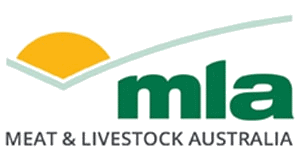Chaff Carts as Sheep Management Tools
| Project start date: | 20 June 2017 |
| Project end date: | 30 June 2020 |
| Project status: | Completed |
| Livestock species: | Sheep |
| Relevant regions: | Southern Australia |
|
Download Report
(1.9 MB)
|
|
Summary
The project was undertaken as each year W.A. sheep farmers are faced with the summer-autumn feed gap, essentially a 6-month drought. The feed gap makes it difficult to maintain sheep condition, and limits summer stocking rates. It also often results in poor ewe condition, therefore lower conception and lambing rates. Current practice is extensive supplementary feeding, with the labour and grain costs one of the main expenses associated with W.A. sheep enterprises. It is also a difficult and stressful time, as feed allocation can be difficult to get accurate. Most producers also graze stubble residue, as a majority of W.A. producers run mixed enterprise businesses.
The project aimed to demonstrate that chaff carts can benefit sheep enterprises by increasing sheep condition and reducing supplementary feed costs, improving overall farm productivity and profitability. The objectives were to demonstrate these impacts on four properties in Western Australia's Great Southern, with sites running for three years.
Objectives
The primary objectives of this demonstration site were to:
• demonstrate the impact grazing chaff piles has on sheep management
• demonstrate the economic benefits of chaff carts as a sheep management tool through BCA modelling
• increase understanding in the wider industry about the potential role of chaff carts on mixed-farming enterprises.
• reinforce understanding of the role of nutrition in ewe productivity, to 120 producers in the region.
Progress
Chaff treatment, either using a cart or lines, was shown to lead to weight advantages in sheep of all stock classes compared to sheep that grazed traditionally chopped and spread stubbles.
Sheep grazing the chaff cart treated paddocks had higher comparative advantage than those on chaff lined paddocks as well as the control paddocks, indicating that it may be a more effective tool than lining for the sheep enterprise.
Utilising chaff carts resulted in productivity gains for reproduction, as well as decreased feed costs. Overall, the calculated IRR of a chaff cart was 35% in its assumed 20-year lifetime.


